Early Katharine Hepburn: A Woman Rebels
Programmed by Ursula Wagner
Essay by Ursula Wagner
"I strike people as peculiar in some way, although I don't quite understand why. Of course, I have an angular face, an angular body and, I suppose, an angular personality, which jabs into people."- Katharine Hepburn, on her early years in Hollywood
In her successful 62-year film career, Katharine Hepburn (1907-2003) made many movies celebrated as essential classics and simply became one of the most beloved actresses in the world. But she wasn't always so popular. It took movie-goers about a decade to decide if they really liked her or not. That decade was the 1930s.
Hepburn's unconventional looks, intense personality, and ambiguous gender presentation all posed problems for the '30s film industry. She modeled much of her persona on boyish Broadway actress Hope Williams, even wearing pants at a time when ladies did no such thing. But she also had gorgeous high cheekbones and a face that projected light when filmed--not that any studio was willing to film it without first blotting out her dense freckles with heavy layers of makeup. But that was about the only part of the edgy would-be starlet they could blot out.
Being so different from other actresses is what made Hepburn both a star and a problem. She performed her first screen test in Hollywood with her back to the camera, turning around only to pick up her champagne glass in the last moment. But the weight she brought to that move convinced director George Cukor of her onscreen magnetism, and she got the part in A Bill of Divorcement (1932) despite producer David O. Selznick's misgivings about casting a "horse face"like her.
Selznick's huge gamble paid off. With A Bill of Divorcement, Hepburn shot to stardom. Further success followed with Morning Glory (1933) for which she won her first Oscar, Little Women (1933), and Alice Adams (1935). In each, Hepburn's fiery spirit shone through and was irresistible in its unconventionality. But she soon became too much for some. Seeing her shave her head and kissing another woman in the gender-bending comedy Sylvia Scarlett (1935, co-starring Cary Grant) shocked and angered audiences. A Woman Rebels (1936), a period piece with a strong feminist bent, was similarly rejected by the public and critics alike, as were her other projects around this time.
In the late '30s, Hepburn began winning the critics back, but audiences seemed to have permanently turned on her. In Stage Door (1937) she again played a version of herself (a wealthy socialite, determined to make it as an actress on grit alone, but hated by her fellow actresses). It was nominated for Best Picture but its poor run at the box was blamed on Hepburn. Her next film, Bringing Up Baby (1938) with Cary Grant--now hailed as a comedy classic--simply bombed. This led theater owners to officially dub her "Box Office Poison."InHoliday (1938), another romantic comedy with Grant, she played yet another free spirit unbound by societal conventions. It too flopped at the box office, and Hepburn's Hollywood star seemed doomed to fade.
But she turned her gloomy fate around when her next film, The Philadelphia Story (1940), was a smash hit. This triumphant end to the decade was no fluke but rather carefully calculated by Hepburn, who used her connections, clout, business sense, and negotiating skills to create the perfect comeback for herself. Suddenly, the nation felt she was their Kate again, and all was forgiven. She never again lost control of her audience or her reputation. She is no longer remembered as anything but one of the greatest leading ladies of all time, with those '30s flops a mere blip on a solid six-decade run.
Of course, here at Doc, we think every moment of Kate on film is worth witnessing. Just as George Cukor found her "interesting"enough to cast before he actually even liked her, we think her troubled "box office poison"years may be her most interesting by far. Join us every Monday at 7pm this quarter as we ride the ups and downs of this unconventional superstar's rocky start.
2014-01-06 @ 7:00 PM
A Bill of Divorcement

(George Cukor, 1932) · In her film debut at age 24, Hepburn plays the daughter of a man (John Barrymore) who escapes an asylum only to find that his wife has divorced him and his daughter may have inherited his mental problems. The role made Kate a star, but producer David O. Selznick didn't want to cast her, calling her a "horse face." Luckily, director George Cukor saw her screen test and had to have her, saying "There was this odd creature...unlike anybody I'd ever heard."
runtime: 70 min format: 35mm, Restored print courtesy of the UCLA Film & Television Archive
2014-01-13 @ 7:00 PM
Morning Glory

(Lowell Sherman, 1983) · Eva Lovelace (Hepburn), a small-town theater performer, dreams of seeing her name in lights on a Broadway marquee. Hepburn's naive ingenue gets her big break eventually in this "star is born" narrative. Shot as if it were a play, Hepburn elevates the material to be cinematic - her snappiness and pluck proved that she was no morning glory; she was here to stay. Hepburn snatched the lead role from Constance Bennett, for whom it had been written.
runtime: 74 min format: 35mm
2014-01-20 @ 7:00 PM
Little Women
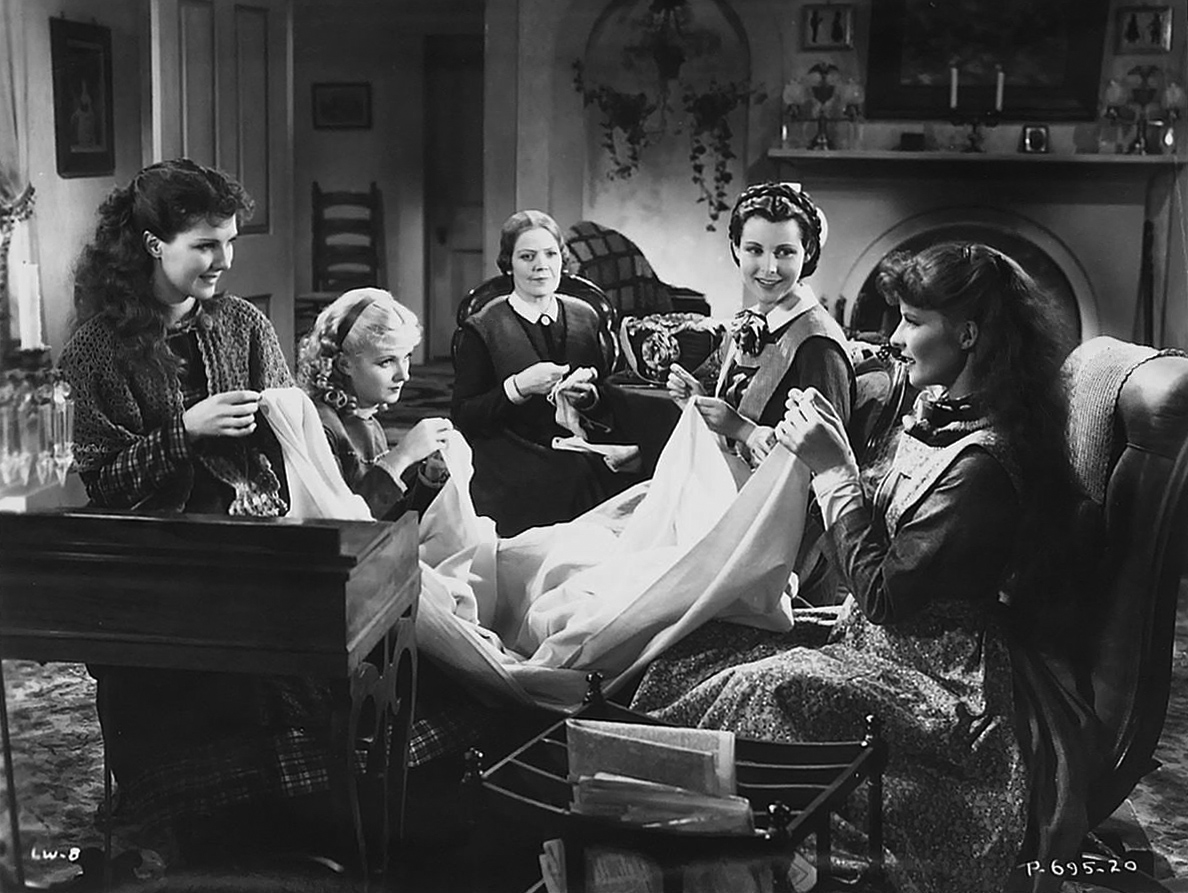
(George Cukor, 1933) · Longing for simpler times and a break from movies about sex and violence? So were Depression-era audiences. Lose yourself in the lives of the March sisters in this moving adaptation of the beloved novel. Come to hate the bratty Amy, cry over the sickly Beth, feel bored by the perfect Meg, and want to be the strong-willed Jo. That's Hepburn, naturally, in her most autobiographical role. She later said, "I defy anyone to be as good [as Jo] as I was."
runtime: 117 min format: 35mm
2014-01-27 @ 6:15 PM
Alice Adams
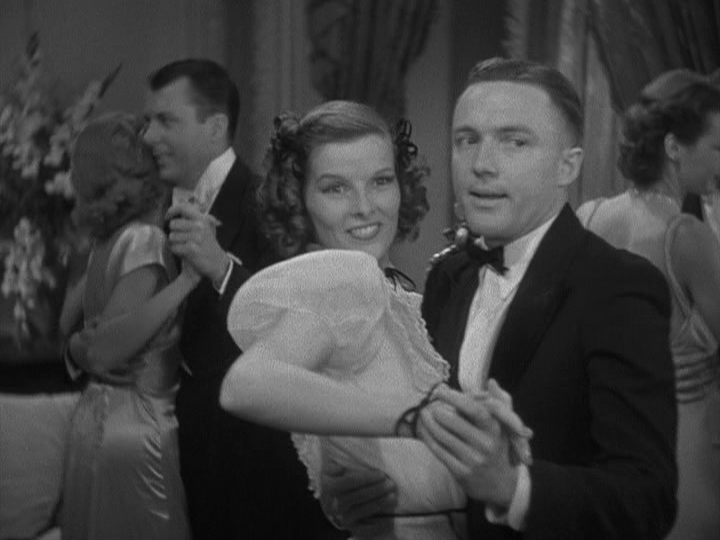
(George Stevens, 1935) · Hepburn got public adoration and another Oscar nod for playing a young woman hiding her poverty from her rich suitor (Fred MacMurray) in this adaptation of Booth Tarkington's Pulitzer-winning novel. Hepburn loved the book but hated the Hollywood script, rewriting it with the director to give it the book's dialogue and realistic ending. But the producers insisted on a happy ending, and so we get to see her get her man--instead of a secretary job.
runtime: 99 min format: 35mm
2014-02-03 @ 7:00 PM
Sylvia Scarlett
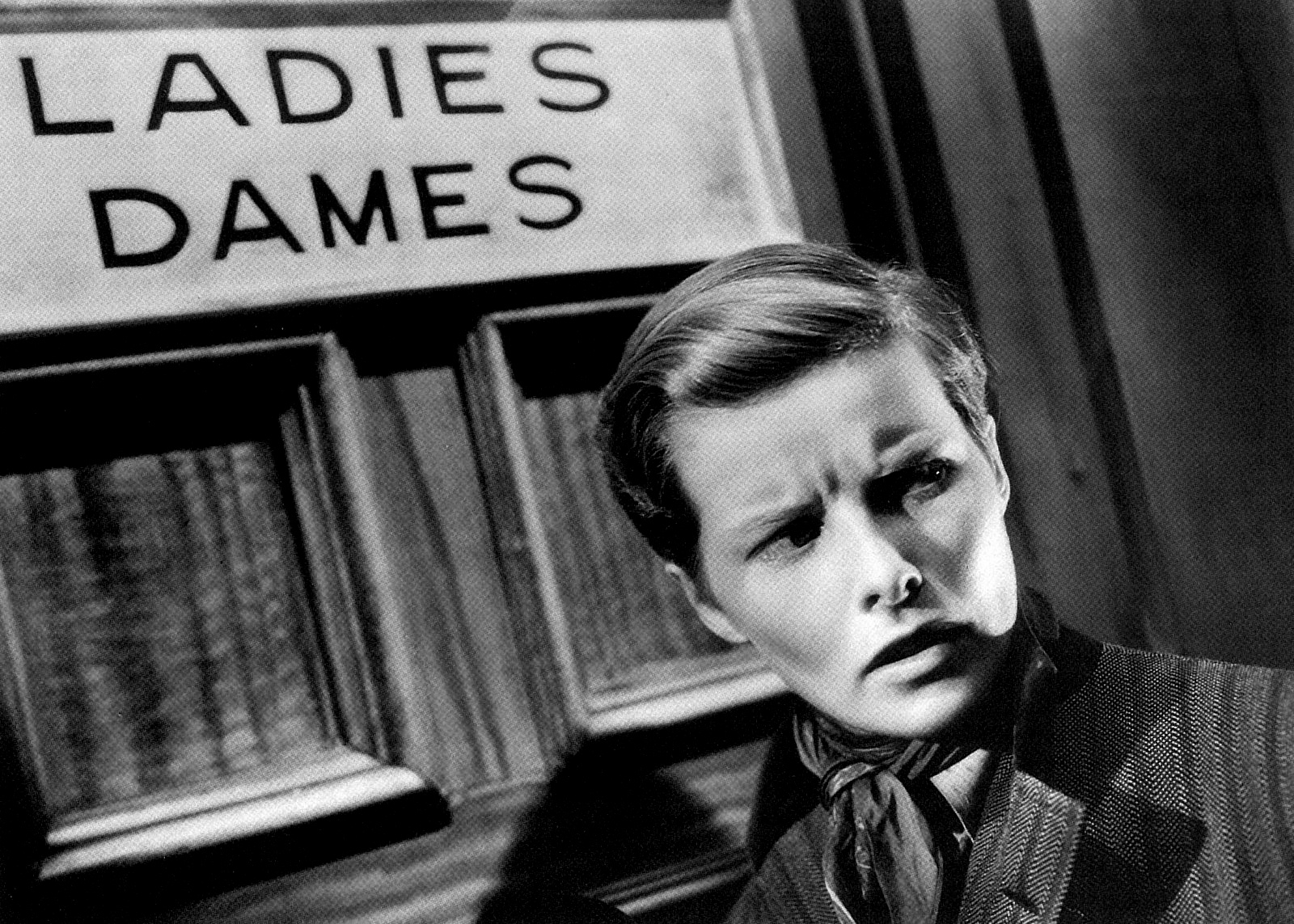
(George Cukor, 1935) · While disguised as a boy to escape the police, Sylvia meets a dashing con man (Cary Grant, in his first pairing with Hepburn) and a sexy maid (Dennie Moore), and Shakespearean hijinks ensue. It was the perfect role for Hepburn, who grew up wanting to be a boy and going by "Jimmy." But crowds stormed out of the first screening after seeing their leading lady in drag and being kissed by Moore. And so began Hepburn's descent into "box office poison."
runtime: 85 min format: 16mm
2014-02-10 @ 7:00 PM
A Woman Rebels
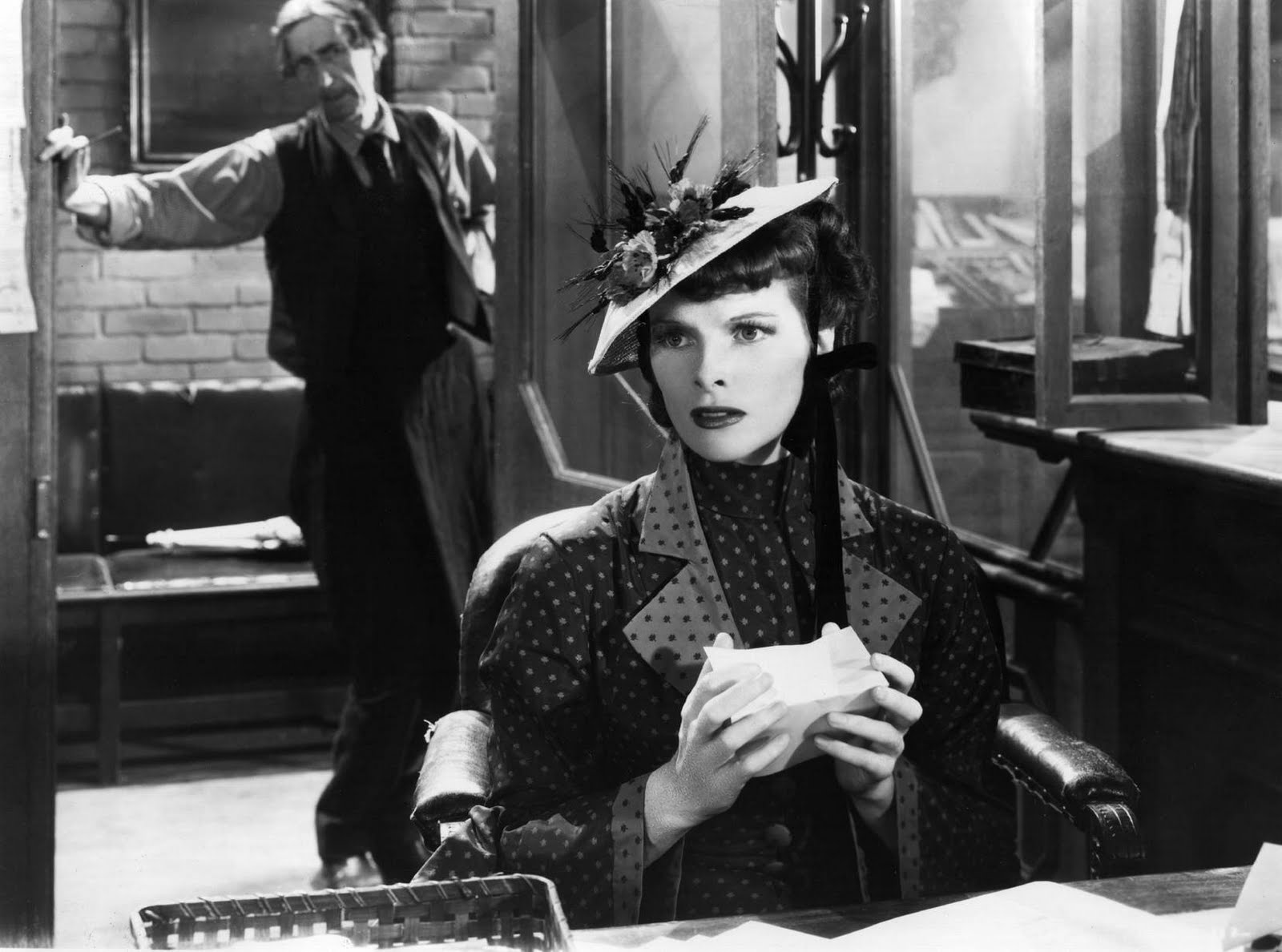
(Mark Sandrich, 1936) · Hepburn's Pamela refuses to conform to the social mores of 19th-century Victorian England. She lives alone, has a child out of wedlock, reads, works, and says whatever she damn well pleases. Not only does Hepburn sport 22 different costumes covering a 25-year span, but she also effectively translates her modern off-screen feminist perspective to what could have been a passé period piece. A box office flop, "A Woman Rebels" was ahead of its time.
runtime: 88 min format: 35mm, Print courtesy of the Academy Film Archive
2014-02-17 @ 7:00 PM
Stage Door

(Gregory La Cava, 1937) · "Stage Door" finds Hepburn running away from a wealthy background to pursue her dream of becoming an actress and taking up residence in a New York City theatrical boarding house. The film is notable for its realistic depiction of boarding house life, including malnutrition and aging sugar daddies. Hepburn is also finally paired with partners that can keep up with her fast banter and give as good as they get - Ginger Rogers and Lucille Ball.
runtime: 86 min format: 16mm
2014-02-24 @ 7:00 PM
Bringing Up Baby
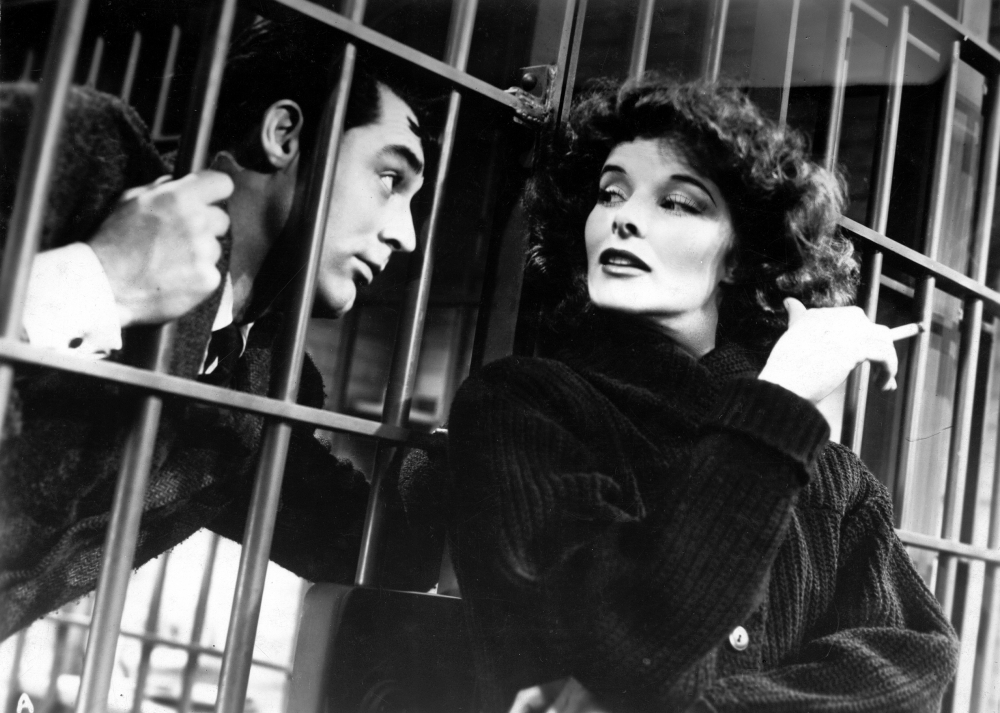
(Howard Hawks, 1938) · A missing dinosaur clavicle bone, a Jack Russel Terrier, and a leopard that answers to Baby may carry the plot, but this film mostly serves as a chance for Hepburn to play her strangest and daffiest character yet, alongside Cary Grant. The story is too silly to describe, but it is always a pleasure to watch a love-addled Hepburn in what Leonard Maltin called "the definitive screwball comedy, and one of the fastest, funniest films ever made."
runtime: 102 min format: 35mm
2014-03-03 @ 7:00 PM
Holiday
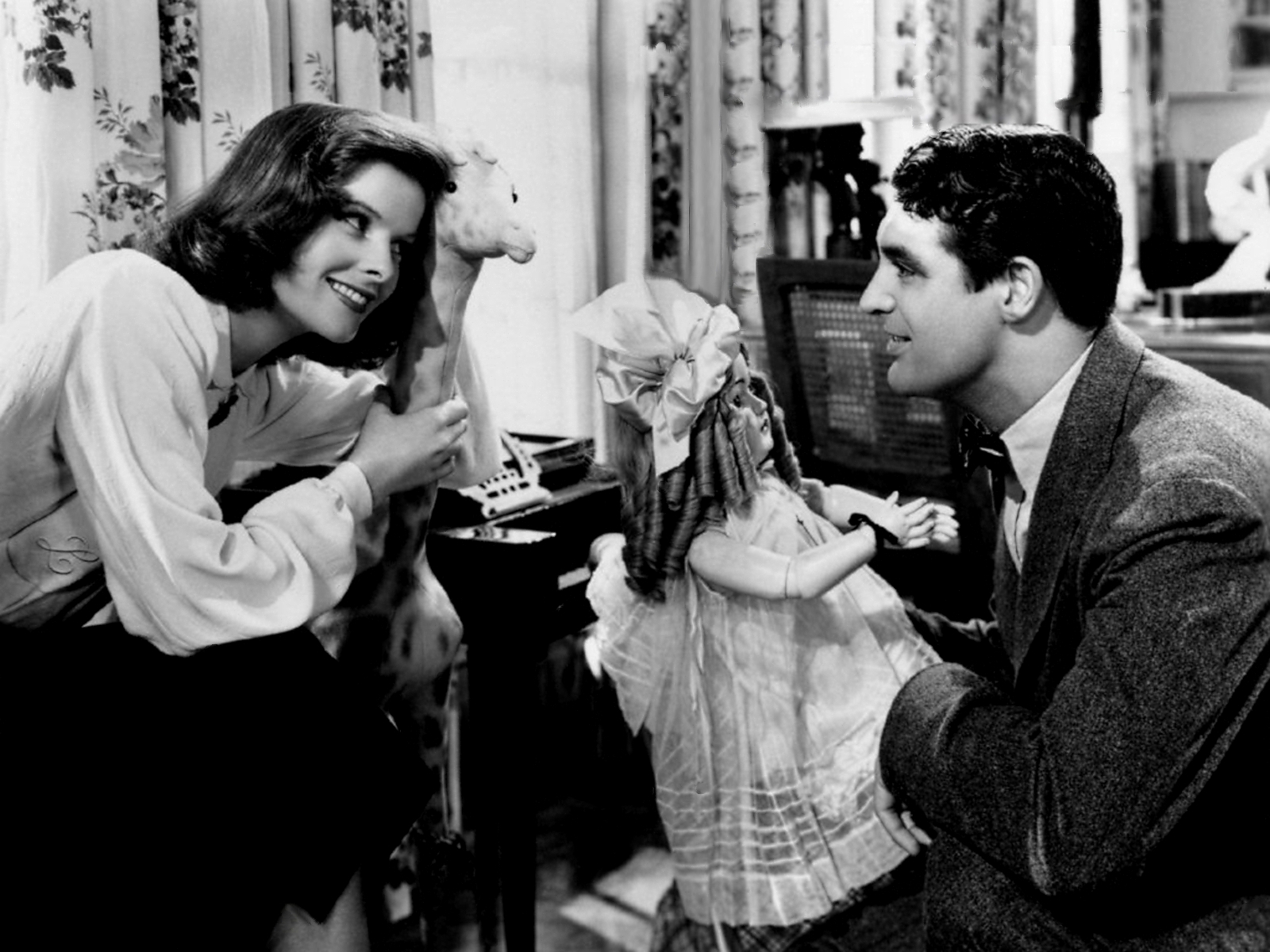
(George Cukor, 1938) · Johnny (Cary Grant) arrives at a mansion to see his new fiancee and runs into her sister Linda (Hepburn) instead. While some might claim "The Philadelphia Story" is Hepburn's greatest romance, there's a case to be made that the honor actually belongs to "Holiday". The moment when Johnny falls in love with the free-spirited, unassuming Linda on New Year's Eve is surpassed only by Linda and Johnny's puppet show and Grant's joyous handstand to end the film.
runtime: 85 min format: 35mm
2014-03-10 @ 7:00 PM
The Philadelphia Story

(George Cukor, 1940) · How to stage a comeback after years as "box office poison": 1) Help Phillip Barry write play just for you 2) Nail part on Broadway 3) Have lover Howard Hughes buy you film rights 4) Sell rights to studio on condition that you play lead 5) Make audiences laugh at your character until they sympathize with her! Women did not do such things, but Hepburn did it all on purpose. It worked—audiences fell back in love with her and never turned against her again.
runtime: 112 min format: 35mm



